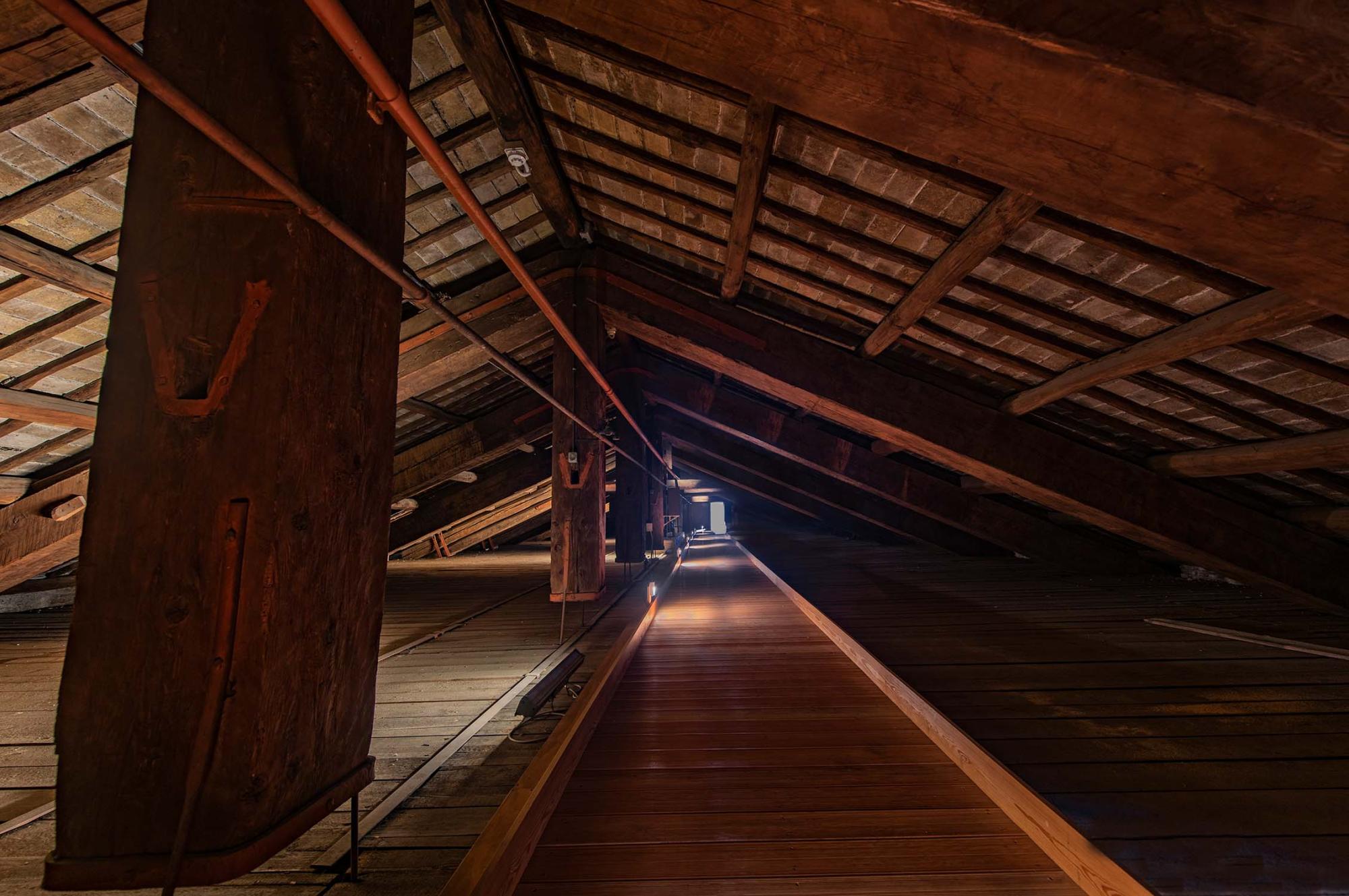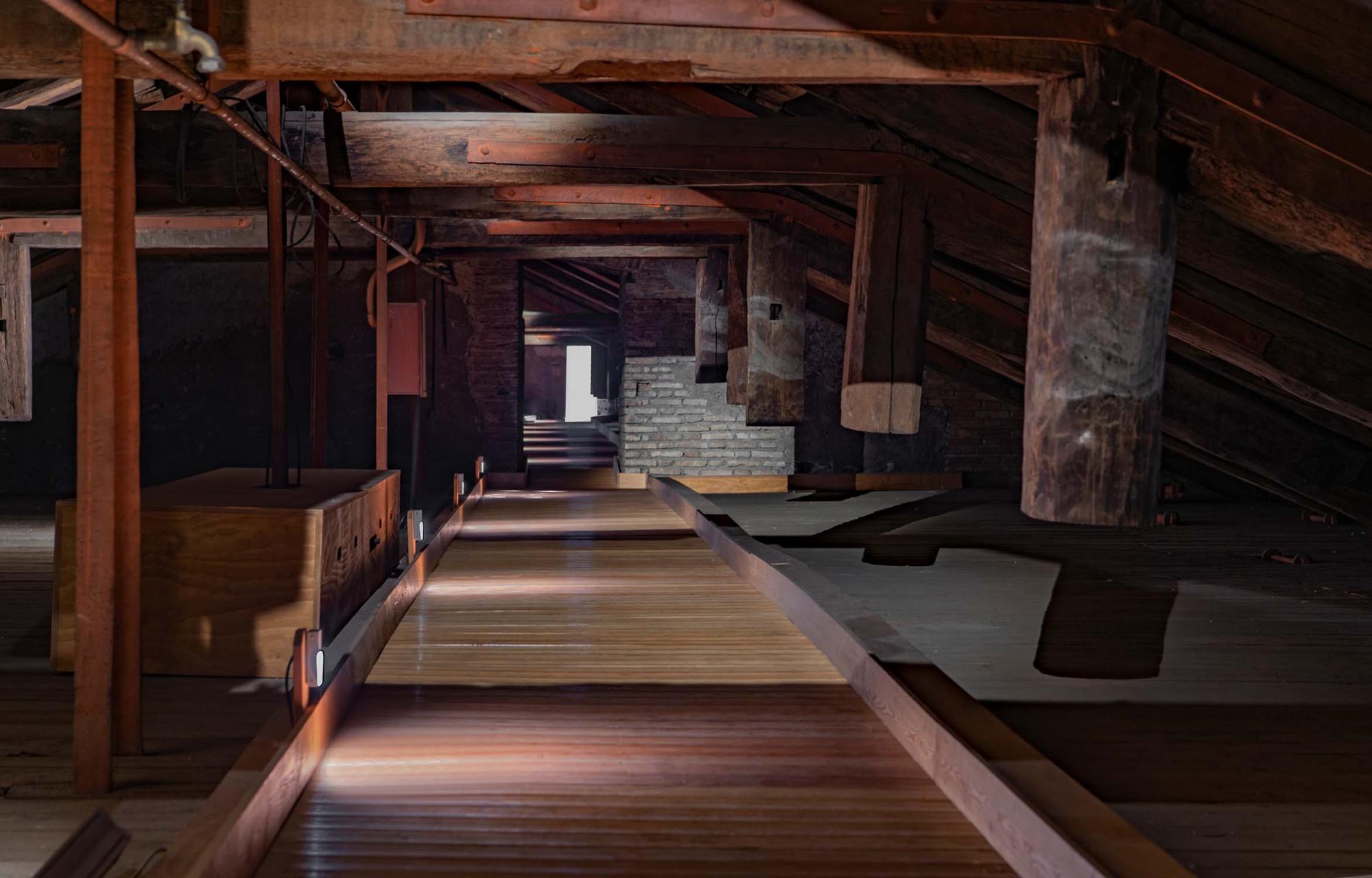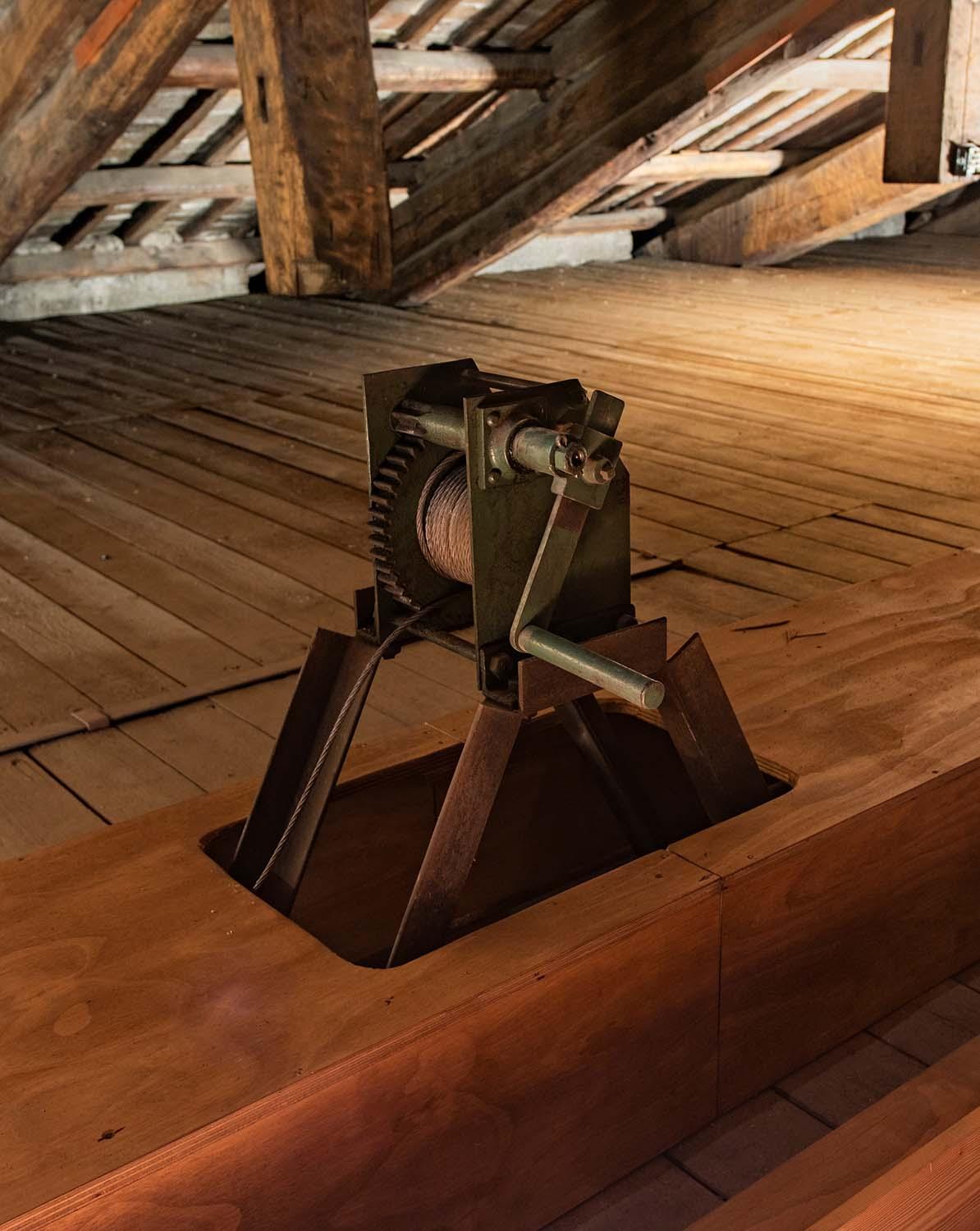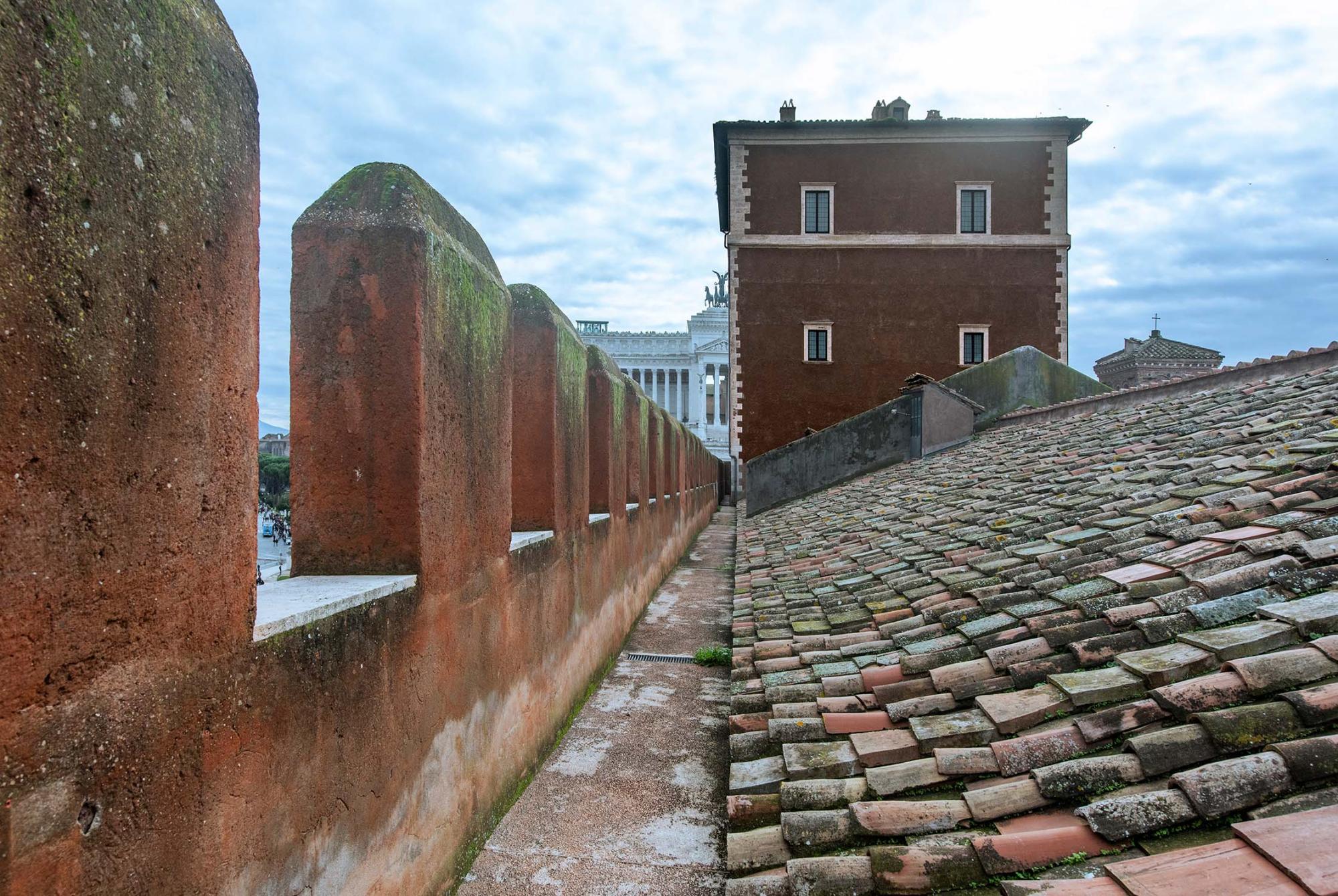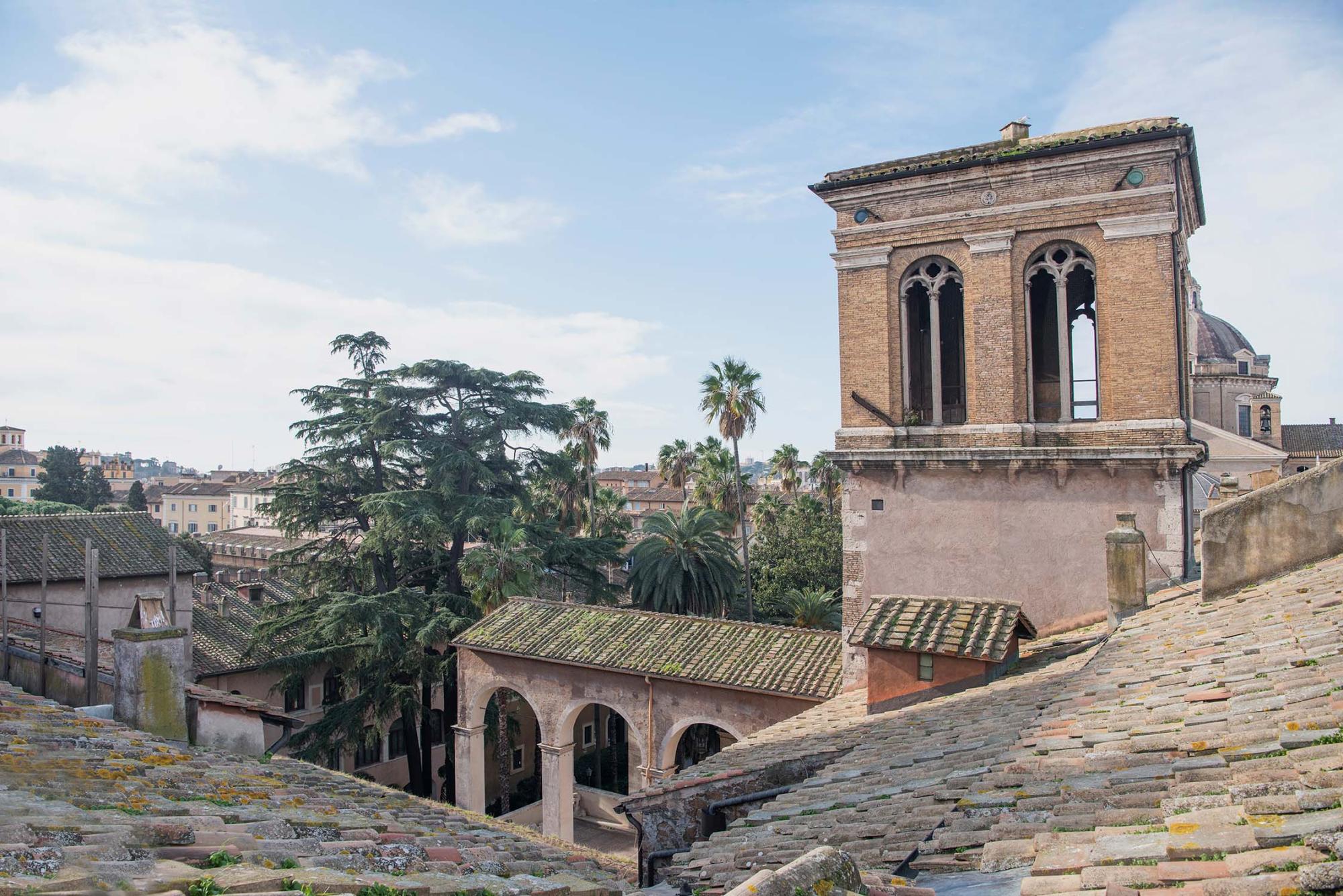Attics, walkways and roof terraces
Palazzo Venezia contains corners of great beauty and historical importance, which for a long time were kept hidden from the public
In recent years, several hundred visitors have had the opportunity to take guided tours to access areas of the building which, although of considerable interest, had remained largely unknown until then.
This statement certainly applies to the attic spaces. The guided tour grants access to the wooden loft spaces located above two of the three monumental rooms on the piano nobile, namely the Sala delle Battaglie and the Sala Regia. On this tour, among other things, visitors can appreciate the large wooden trusses and the mechanism for hoisting and lower the chandeliers, once essential for replacing candles, now used to change the light bulbs.
Built in the second half of the fifteenth century, Palazzo Venezia still retains the fortified structure that marked much of the civic architecture from the early and middle Renaissance. Taking visitors right behind the rooftop cornice with its crenelated battlements and corbels, the guided tour of the Chemin de ronde, or patrol walkway of the western, northern, eastern sides, as well as part of the northern flank, allows visitors to appreciate entirely new panoramic views, including an extraordinary enfilade view towards the Colosseum, through via dei Fori Imperiali.
Visitors will be already able to appreciate the panoramic roof terrace even from below, in the Giardino Grande. The roof terrace, built by Cardinal Marco Barbo (1420-1491) at the end of the fifteenth century, was added on top of a pre-existing structure, perhaps the tower of the Annibaldi residence and it is characterised by the sophistication of its structural elements: the elegant brick masonry, the two slender mullioned windows that open on each side and the ceramic basins with the cardinal’s coat of arms, one of which is now kept in the museum.
But it is only when you get to the top that curiosity turns into amazement. At the end of a staircase of sixty-four steps, located in the very heart of the building, visitors can enjoy a 360-degree view: all the beautiful roofs, bell towers and domes, the thousand jewels in the crown of the Eternal City, seem close enough to touch.

